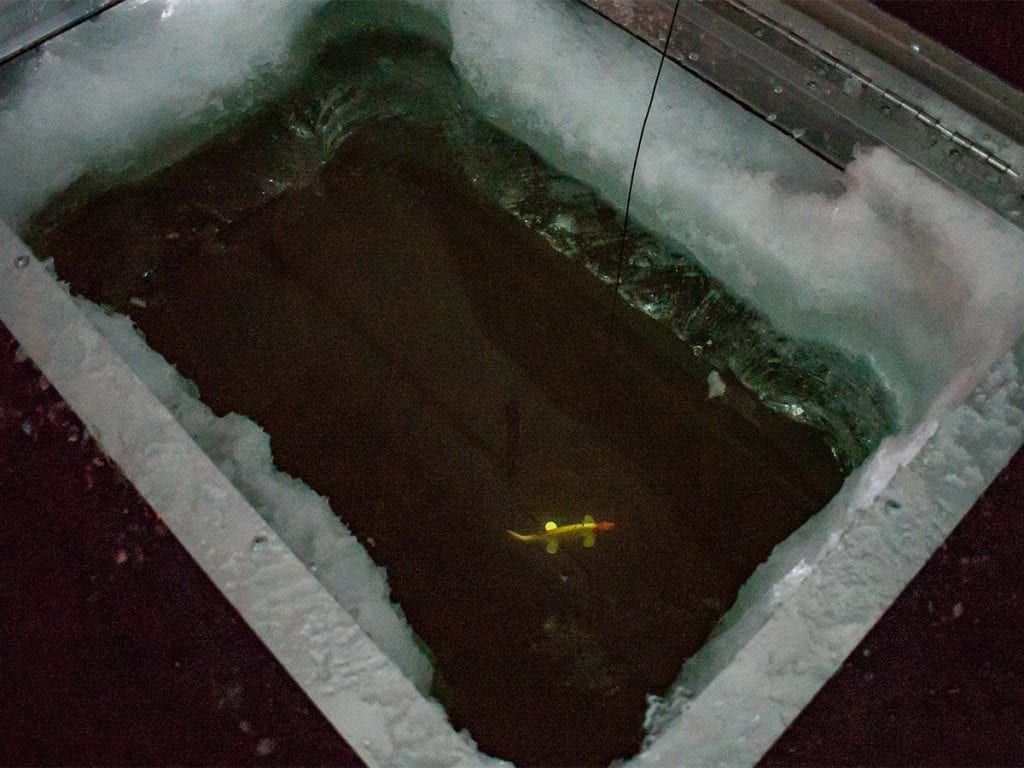How to Attract Fish when Spearfishing
From aboriginal tribes to ancient Greece, early civilizations figured out how to attract fish while spearfishing and netting. According to the British Library Science Blog, the use of hanging baskets and men feeding fish as an early form of “fish aggregation devices,” allowed for the easy capture of big fish.
Over the last 120 years, innovations in fishing equipment have enabled fishermen to make use of synthetic decoys and lures to attract fish while spearfishing.
Luring methods differ among the various types of spearfishing, such as scuba diving deeper water for yellowfin tuna with pole spears or spearguns. But the great thing about the sport of spearfishing is that it typically uses minimal gear.
So, whether you’re fishing from the shoreline or on the ice in a premium spearing darkhouse, vital equipment and methods to attract small or large fish include decoys, spoons, scents, chumming, and even live bait.
Make sure to check your state regulations regarding spearfishing and the use of these luring methods. Different states have very specific laws regarding freshwater spearfishing. In general, spearfishing is legal in most states, but legal species and waters are highly variable.
Decoys while Spearfishing
Decoy use is Spearfishing 101, and wood-carved decoys have been used by generations of ice-fishermen. Be it tadpoles, suckers, frogs, or brook trout, anything that potentially attracts fish is on the table for decoy use.
“Spearos” use decoys to attract fish like northern pike and stop them long enough to get a more accurate spear throw.
When using decoys, the typical technique is to tie them to a heavy fishing line and drop them through the ice into the water. Give the line a couple of jerks now and then (known as jigging) to simulate swimming movement and stand ready. Fish like northern pike are ambush predators of the water and zero in on movement or commotion.
Of course, there are always exceptions. If you want to step out of the norm, you could also just let your decoy lie without moving it and see if a curious pike or carp comes in for it. It has worked for more than one spearfisherman and could work for you!
Make sure to have a variety of sizes and colors on hand and switch them out after a while when they don’t seem to be working. Also, try not to jig too much. Like overcalling turkey or elk, budding spearos tend to move their decoys too much. Too much movement will only result in keeping your quarry at a distance. Time and experience are our best teachers but try to resist the urge early on.
Akin to riding it out in a deer stand for that bruiser buck, patience and perseverance can pay off in the darkhouse too. Extreme concentration for hours on end can get exhausting, so give yourself a break now and then.
Using Spoons, Scents, and Live Bait
Don’t discount digging into your tackle box and pulling out a Swedish Pimple or Lindy Tungsten Ice Worm Jigs to assist in your spearing efforts. Fish activity slows way down during the winter months. So, jigs that simulate an injured fish could be just the thing to make the action perk up.
You can tie it straight to fishing line, or if you are allowed multiple rods in your area, attach it to a rod or tip-ups. This could also act as a backup to your spearing if your target fish locks on to the spoon’s hook.
Also, consider scents to add more depth and dimension to your baits. There are dozens of scents on the market; garlic and anise seem to work particularly well for a number of species. Not only do they attract fish, but they can work as a cover-up for human scent too.
However, you want to make sure the scents you use are water-soluble. In order for fish to detect the scent, they have to be able to interpret chemical signatures that are dissolved in water and dispersed through the water column. This is similar to how salmon make their way back to their originating spawning grounds.
Oil-based scents do great at staying on lures and bait and may smell great to the human nose, but fish won’t “smell” them in most cases. Anise is one of the exceptions.
If you’ve tried decoys, scents, and spoons to no avail, consider using live bait like a sucker minnow. Live bait offers a good advantage because it is a natural prey item of your target fish. It offers the attributes that we try to emulate with decoys and lures.
The key is in the presentation. So, make sure to clip or hook it in a way that allows natural movement or manipulation. Otherwise, your trophy pike will pick up on the fact that something is off. Sadly, you’ll be left staring into the icy depths, fishless.
Chumming while Spearfishing
Chumming while ice spearfishing – can you? When it comes to chumming, we often think of dumping buckets upon buckets of chopped-up fish, guts, and blood to attract sharks. But when it comes to ice or freshwater spearfishing it is certainly a technique that can produce results.
If not done right it can also produce pollution and bring in invasive species, which is why not all states allow it. In some cases, states like Utah don’t allow it within 99% of the state. But they will allow it on certain lakes.
Also, states may only allow certain ingredients like corn. Going even further, some states allow corn to bait a hook, but will not allow corn for chumming. For that reason, make sure to always check local laws and regulations to stay on the right side of the law.
Chumming for ice spearfishing is really just putting larger quantities of bait down the ice hole. Depending on what you’re fishing for, maggots, nightcrawlers, chopped-up suckers and shiners, corn, and even pet food are potential chum ingredients.
If you can successfully get the chum ingredients down into the ice hole without floating away with the current, this can be a highly effective technique.
No matter which legal method you use, ice spearfishing is a great way to put food on the table, spend time with family, and create a sense of community with fellow ice fishers.
If you’re lucky enough to live in some of the upper midwestern states like Michigan, Minnesota, North Dakota, and Wisconsin a lot of prime freshwater spearfishing lies ahead! Maybe you’ll even break a northern pike world record.
Spearfishing was one of the first and primary ways of catching fish and goes back hundreds of thousands of years. Over time, humans have figured out how to improve upon the old ways, including how to attract fish.
There’s a variety of methods to use in order to sustainably harvest fish species like sturgeon, pike, carp, walleye, trout, catfish, and more. And in more recent years, there’s been improvements in spearfishing gear including ice spearfishing skid houses.
Ambush Outdoor Products is one such company dedicated to building fishing skid houses that are meant to last. Our premium, ultra-strong spearfishing dark houses will last you nearly a lifetime. Curious? Find a dealer near you for more information!




